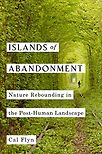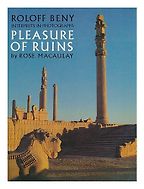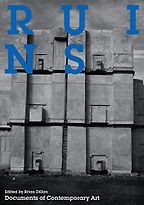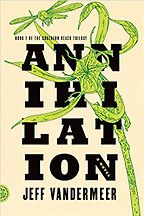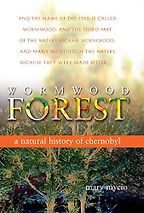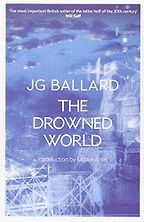Your new book Islands of Abandonment is billed as a book about ‘the ecology and psychology of abandoned places.’ Can you tell us more?
Sure. It’s a nonfiction book in which I travel to 12 locations around the world, studying how nature rebounds in the absence of humans. These sites include the Chernobyl exclusion zone, the no-man’s-land that splits the island of Cyprus in two, a former fortress island off the coast of Scotland, a mothballed laboratory high in the Tanzanian cloud forest, and the evacuated former capital of Montserrat in the Caribbean, which has now largely been subsumed by volcanic ash.
I’m also interested in how abandoned places – their aesthetic, their atmosphere, their marginal status – make us feel. For that, I visited and interviewed residents of so-called ‘blighted’ neighbourhoods of Detroit (ones in which there are very high proportions of abandoned houses) and hung around in some industrial ruins with urban explorers who seek the thrill of stepping ‘off the map’ into an uncontrolled environment. What unites these strands is that sense that society has lost or surrendered control in these places.
Abandoned places do seem to be an object of fascination. We often see deserted cityscapes in popular culture – as the backdrop to dystopian movies, for example.
Absolutely. And the fascination with abandonment and ruins has a long history. Ruins were often painted into the backgrounds of Renaissance artworks. In the eighteenth and nineteenth centuries, the so-called ‘ruin lust’ saw a craze for ‘sham ruins’: pretend Gothic castles or Greek temples constructed in the grounds of country houses. Poets and painters flocked to the Classical ruins of Rome, or channeled their imagination to produce post-apocalyptic visions of their home towns – like Hubert Robert’s fantastical depictions of Paris in picturesque ruins, or Gustave Doré’s New Zealander looking out over the wreckage of London.
Perhaps this leads us to your first book recommendation, Rosemary Macaulay’s The Pleasure of Ruins.
Yes, this is a wonderful book – a real tome. I think it’s out of print now, but I bought a second hand copy very cheap via Abe Books.
Rose Macaulay was a prolific writer who wrote more than twenty novels in the twentieth century. Macaulay was fascinated by ruins and themes of civilisational collapse; I really like her novel My World My Wilderness, which is partially set in post-war London, where a fearless teenage girl called Barbary runs wild through the shell craters and the bombed-out remains of churches, all of which are garlanded with wildflowers and weeds: “greenery that grew high and rank, running over the ruins as the jungle runs over Mayan temples, hiding them from prying eyes…” It’s very atmospheric. But I’ve chosen The Pleasure of Ruins, a nonfiction book, because it’s an impressive work of scholarship: a cultural history of ruins that examines how these places repulse and attract in equal measure, and in that sense haunt our collective imagination.
She’s very good on the origins of sham ruins. She quotes Thomas Whateley, the 18th-century English politician and author of Observations on Modern Gardening:
In wild and romantic scenes may be introduced a ruined stone bridge, or which some arches may be still standing… a picturesque object…the care taken to keep it still open, tho’ the original building is decayed… give it an imposing air of reality
I think that’s so interesting – artifice creating a sense of reality.
These sham ruins are acting as a visual shorthand for the passage of time?
I think the emotional and spiritual significance of the symbol of the ruin, or the abandoned building more generally, is such that it throws our present worries and cares into sharp relief. It says: one day this too will be dust. Of course, she writes about real places too, ancient cities: Petra and Persepolis, Nineveh and Babylon. Places that prove to us the truth of that sentiment. The collapse of civilisations, ruined temples to ruined gods.
She touches on modern ruins too, saying they have yet to acquire the “weathered patina” of age, and have not yet put on their ivy, but
Very soon trees will be thrusting through the empty window sockets, the rose-bay and fennel blossoming within the broken walls, the brambles tangling outside them. Very soon the ruin will be enjungled, engulfed, and the appropriate creatures will revel…
I love that – the redemption of the ruin through natural forces. It is reborn as a living landscape.
In the end, though, she says that ruins are best experienced as a fantasy, that in real life – as she experienced in London during the war – the picturesque destruction is too tinged with sadness and fear to be desirable. The idea of ruination, of abandonment and decay, is bigger and more meaningful than it is in reality.
The second book on abandoned places that you want to discuss explores the same theme – ruination as cultural phenomenon. This is Ruins, from the Documents of Contemporary Art series, edited by Brian Dillon.
That’s right. Dillon, who is an academic and writer, curated a fascinating exhibition at Tate Britain back in 2014 called ‘Ruin Lust’. He looks at the Romantics and the Ruinenlust craze too, but more specifically brings the study right through the 20th and into the 21st century. This book predates the Tate show; it’s an anthology of writing on the subject of ruin lust, abandoned places, modern ruins and what he calls “drosscape” – an academic term for wastelands, or “the points on the map where nature and culture meet in ruinous disarray.”
Get the weekly Five Books newsletter
This is a reference text, not one that you’d sit and read from cover to cover. It’s a collection of short passages from writers like Diderot, Baudrillard, Le Corbusier, Derrida, Solnit, Calvino, Macaulay. Iain Sinclair is in there, and the artist Tacita Dean. Basically, if you are interested in this idea of the ruinous or entropic landscape, and how that ties in with aestheticism, you will love this book. Dillon has done an amazing job of filleting dozens of texts for key components. You can buy Ruins and feel well-read at the end of it; for most people, it will be enough on its own, but if you’re an academic it will give you an excellent starting point or an overview of critical writing on this subject.
Any particular highlights?
I, personally, am very interested in writing by the land artist Robert Smithson. There’s an extract here from a very influential Artforum essay of his, published in 1967, which essentially narrates a journey made through Passaic, New Jersey, as he inspects and admires the industrial landscape. He compares the ugly contemporary construction sites to the grandeur of the ruins of ancient Rome, and writes that these ‘ruins in reverse’ are
the opposite of the “romantic ruin” because the buildings don’t fall into ruin after they are built but rather rise as ruins before they are built.
I think that idea of circularity is important.
Smithson designed ‘Spiral Jetty’ in the Great Salt Lake in Utah, and also produced work in abandoned chalk quarries in England and in the rainforests of the site of the collapsed Yucatán civilisation. I talk about Smithson a lot in my chapter about a ship graveyard in Newark Bay, and the toxic legacies of the Industrial Age – including the persistant organic pollutants that have seeped into the sea water there. It’s just downriver from Smithson’s Passaic. I write about particular kinds of fish that are evolving to survive in water with chemical contamination that would previously have proven lethal.
Next we are stepping into the world of fiction. You’ve selected Jeff VanderMeer’s Annihilation, a novel that has been recommended several times on our site. Laura Dassow Walls described VanderMeer as “the weird Thoreau.”
That interview is where I heard about him, actually. I bought a copy of Annihilation right away and lost myself in it. I can’t tell you how eerie and absorbing it is.
I’d better explain the set up: Annihilation is the first novel in VanderMeer’s Southern Reach trilogy. The Southern Reach is a research institution set up to investigate the mysterious ‘Area X’, an exclusion zone with strange and frightening effects on the human mind. We follow ‘the biologist’, one member of a four-woman team that has been dispatched into the zone. Long abandoned and fenced off, it has grown into a pristine wilderness – but it is haunted by traces of the expeditions that have gone before them. If you’ve seen Andrei Tarkovsky’s classic film Stalker, you’ll have some sense of the atmosphere and concept. Like Stalker, it’s incredibly unsettling, and yet terribly, verdantly beautiful. It’s very, very good.
VanderMeer followed this up with Authority and Acceptance.
Yes. What’s interesting about the Southern Reach trilogy is that it doesn’t answer all the questions that it poses. You have to be quite willing to come away at the end still not quite certain what is going on. But I like that about it.
I made the mistake of taking Annihilation with me on a trip to Swona, an abandoned island off the north coast of Scotland, where I spent 24 hours alone and slept in an abandoned house. I’d travelled there in June, when the wildflowers were in bloom and the birds were breeding; I thought it would be nice to see it so full of life, and it was. But the ‘life’ was not pleased to see me. I was threatened by what we call bonxies – great skuas, big busty seabirds – and then dive-bombed and scratched by Arctic terns when I accidentally got too close to their colony.
“I had to put it down and read a 1974 Readers Digest instead, because it was making me far too jumpy to sleep”
Being there amid the abandoned houses, all in various states of dereliction, some with belongings still in the cupboards and one with the dining table still set, was very unsettling. Even though I knew myself to be safe, I just couldn’t relax. There were birds stamping around in the roof space of the house I stayed in overnight, which kept me awake. And my only reading matter was this, which definitely didn’t help. In the end I had to put it back in my rucksack and read a 1974 Readers Digest that I found in a cupboard, because it was making me far too jumpy to sleep.
Your fourth book about abandoned places is Mary Mycio’s Wormwood Forest: A Natural History of Chernobyl. Is this the real-life Area X?
In a sense, yes. I suppose that sense of unseen, unknowable danger is very much present when visiting the Chernobyl exclusion zone. There are a number of very good books about the 1986 nuclear accident and its aftermath – not least Svetlana Alexievitch’s Chernobyl Prayer (known as Voices from Chernobyl in the US) and Serhii Plokhy’s Baillie Gifford Prize-winning Chernobyl: History of a Tragedy. But what I’m really interested in, and what I travelled there myself to see in 2017, is how the natural world has rebounded or reacted in the wake of the accident and in the absence of people.
The exclusion zone, or ‘zone of alienation’ in the more poetic translation, covers about a thousand square miles of Ukraine. There’s also a large ‘radioecological reserve’ over the border in Belarus, which arguably received the brunt of the contamination. So we’re talking about an enormous area that has been almost entirely deserted. It takes in two towns, Chernobyl and Pripyat, and nearly 200 smaller settlements, many of which were farming communities. In Pripyat, we explored abandoned schools and sports facilities, a small fairground, a supermarket and apartment blocks. The scale of the abandonment inside the zone is really quite incredible.
And though the radiation has had myriad negative effects – especially in the immediate aftermath of the accident, when swathes of pine forest were killed, and unknown numbers of animals died of radiation poisoning – the zone has, over time, begun to be recolonised by flora and fauna. It’s a controversial subject, but Mary Mycio breaks down complex science and translates it for a general audience. Published in 2005, it’s now a little out of date, but I’d recommend anyone interested in the apparent natural recovery of the Chernobyl exclusion zone to start with this book, before moving on to more recent scientific studies, as it offers an excellent grounding in the science. And it’s all told through an engaging first-person narrative.
Finally, you wanted to recommend J. G. Ballard’s novel The Drowned World.
Yes. This was recommended to me by Amy Liptrot. I’d never read any Ballard before that.
The Drowned World is set in a post-apocalyptic future, in which the ice caps have melted and the planet is growing ever hotter. The world’s surviving population has fled north to what was the Arctic. London is flooded; its buildings rise from steamy lagoons where once were Piccadilly Circus and Pall Mall and Trafalgar Square. Dr Kerans is a research scientist working for the military, and is making ecological study of this strange new habitat. He lives in some style in the penthouse of the abandoned Ritz Hotel, helping himself to the cocktail cabinet and wearing the luxury suits left by its last occupant before the evacuation, a Milanese financier.
Five Books interviews are expensive to produce. If you're enjoying this interview, please support us by donating a small amount.
All the time it’s getting hotter, and the wildlife is getting wilder and more primitive – de-evolving, in Ballard’s way of thinking. And so is Kerans. You can think of it as a sort of cli-fi Heart of Darkness, with that unhinged quality, and the intense heat, and this ominous ramping up of tension. It also has a number of things in common with Annihilation, in as much as the main character Kerans is a biologist studying this uncanny world, and growing increasingly psychologically affected by it.
As a vision of the future, it’s rather terrifying. But it’s rather beautiful too: this steamy, swampy London where alligators lurk in cloudy waters, and giant lizards roar at the sun. There’s an incredible scene in which a sort of pirate, Strangman, drains Leicester Square using pumps and dams, and the few remaining residents walk into the silted-up, slimy city streets, and find it horrifying.
While working on Islands of Abandonment, I found I kept circling back around to sci-fi. Although I’m writing nonfiction, there was something in the atmosphere of Annihilation and The Drowned City that I wanted to recreate; I wanted my book to feel the way I did reading those books. Because abandoned places often are uncanny in the manner of weird fiction, they can be ominous and eerie and unsettling. And yet they are thrilling too – and that what draws me back, the way I keep being drawn back to these books.
Cal Flyn’s Islands of Abandonment: Life in the Post-Human Landscape is out now.
January 26, 2021. Updated: July 17, 2021
Five Books aims to keep its book recommendations and interviews up to date. If you are the interviewee and would like to update your choice of books (or even just what you say about them) please email us at [email protected]

